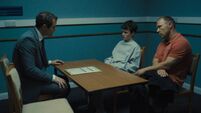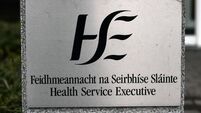More than 300,000 people waiting for diagnostic scans
At the end of 2024, there were 300,115 patients waiting for scans, including 94,762 on the list for an MRI and 88,270 people waiting for a CT.
More than 300,000 people are waiting for diagnostic scans leading to longer wait times to begin vital treatments.
The number of people on waiting lists has increased by 227,000 in the last three years and the figure continues to rise.
At the end of 2024, there were 300,115 patients waiting for scans, including 94,762 on the list for an MRI and 88,270 people waiting for a CT.
Other diagnostic scans, including angiogram, electrocardiogram and bone scans, are not included in the data.
The number of people waiting over 18 months to get their required scan has increased over the past three years as well.
While there were just over 33,000 still on waiting lists after 18 months in 2021, this has risen to almost 44,000.
According to figures provided to Sinn Féin TD David Cullinane, there are 9,800 children waiting to get a diagnostic scan.
The Dublin and Midlands area has the highest number of people waiting with over 73,400 on lists at the end of 2024 while the Mid West had 21,000 and South West had 24,900 people on its lists.
Mr Cullinane said swift action needs to be taken to tackle the waiting lists as people cannot receive a diagnosis until they can undergo these diagnostic scans.
"A large number of these patients are waiting on scans for cardiac issues and cancer diagnosis and we know that early intervention is crucial in these areas," said Mr Cullinane.
When people get their diagnosis after waiting months for scans, many will then find themselves put on new waiting lists to receive treatment, he said.
Director of advocacy and communications with the Irish Cancer Society, Steve Dempsey said it has consistently called for the Government to address these issues.
"Agreed cross-party in 2017, Sláintecare set the ambition of nobody waiting more than 10 days for a diagnostic test. We are getting further and further away from realising that goal and patients and families across Ireland deserve better," said Mr Dempsey.
"Delayed diagnostics means delayed cancer detection. We know the earlier cancer is detected, the better chance of survival. These worsening wait times could mean unnecessary excess cancer deaths."
Mr Dempsey said in order to tackle the long wait times the Government must address chronic staff shortages as diagnostic equipment lies underutilised in hospitals.
Health minister Jennifer Carroll MacNeill said the department launched the first National Radiology Diagnostic Waiting List Management Protocol for patients waiting on radiology diagnostic lists in public hospitals.
Its aim is to ensure the list is managed in "a safe, timely, fair and equitable manner" and will facilitate improved data collection and reporting, said Ms Carroll MacNeill.
Meanwhile, Mr Cullinane has called for greater transparency in relation to all waiting lists making the point that these figures have only come to light following a PQ submitted by him.
All waiting lists, including for diagnostic scans and community waiting lists, should be published in the same manner as the NTPF releases public hospital waiting list data, he said.










